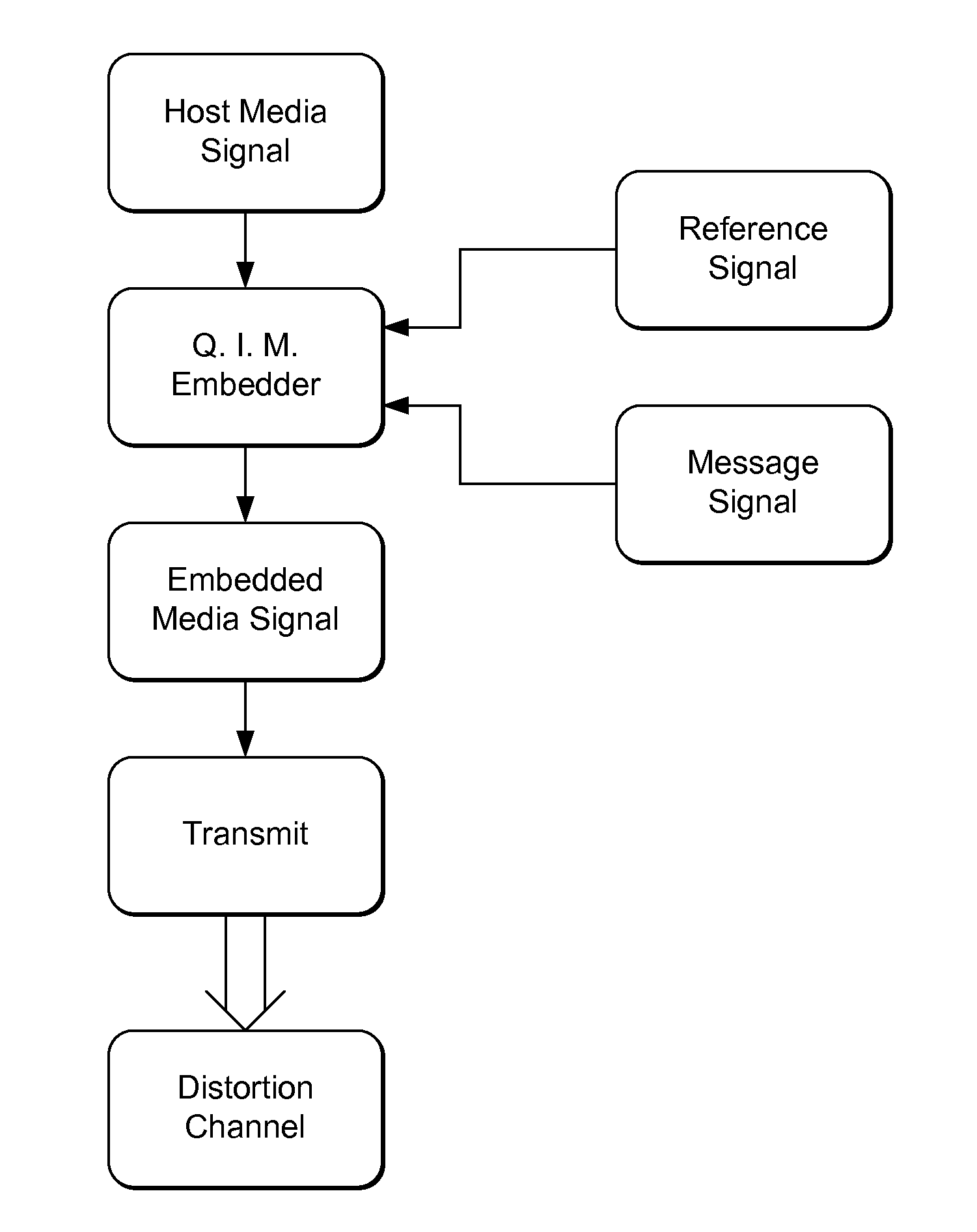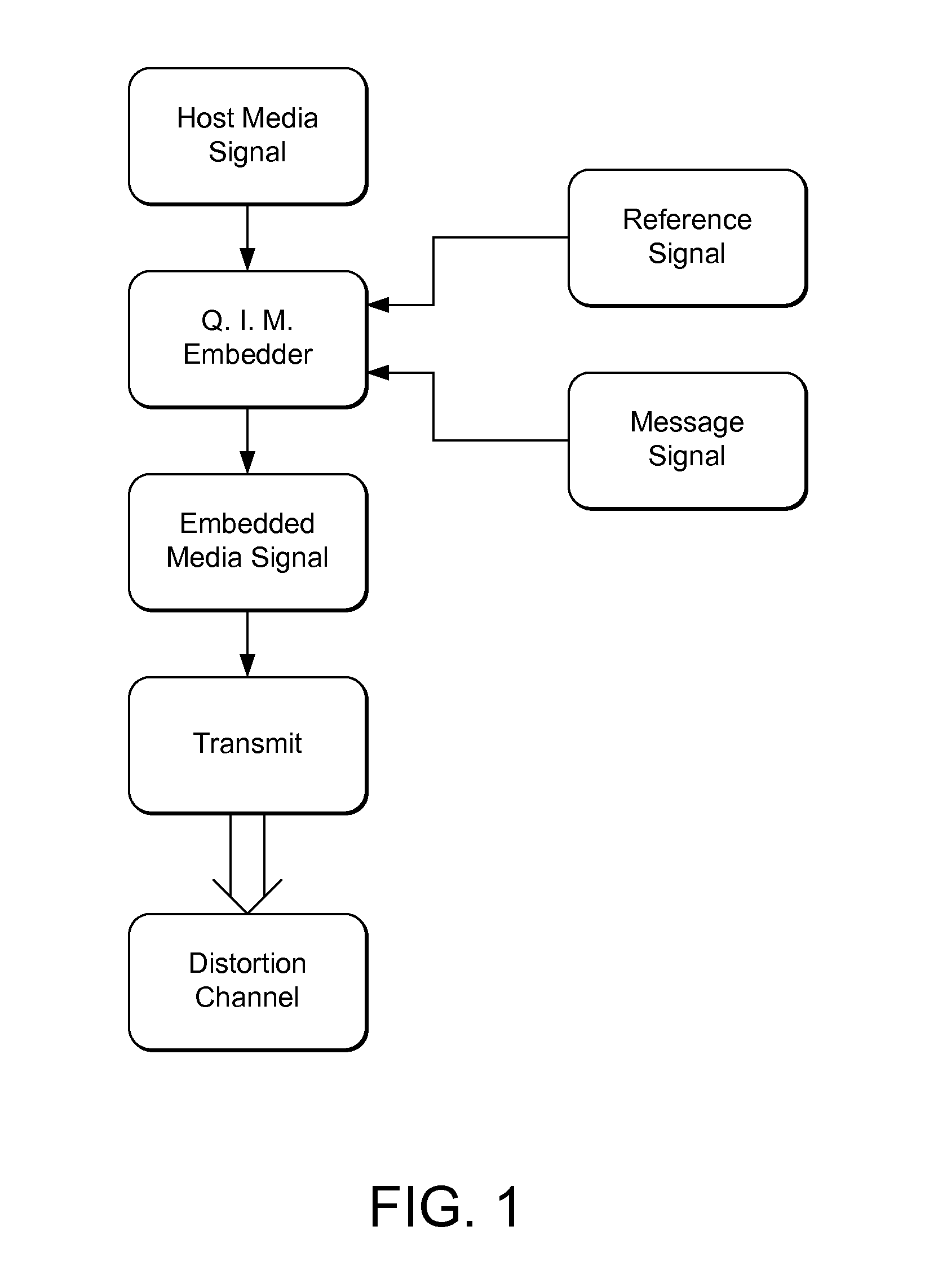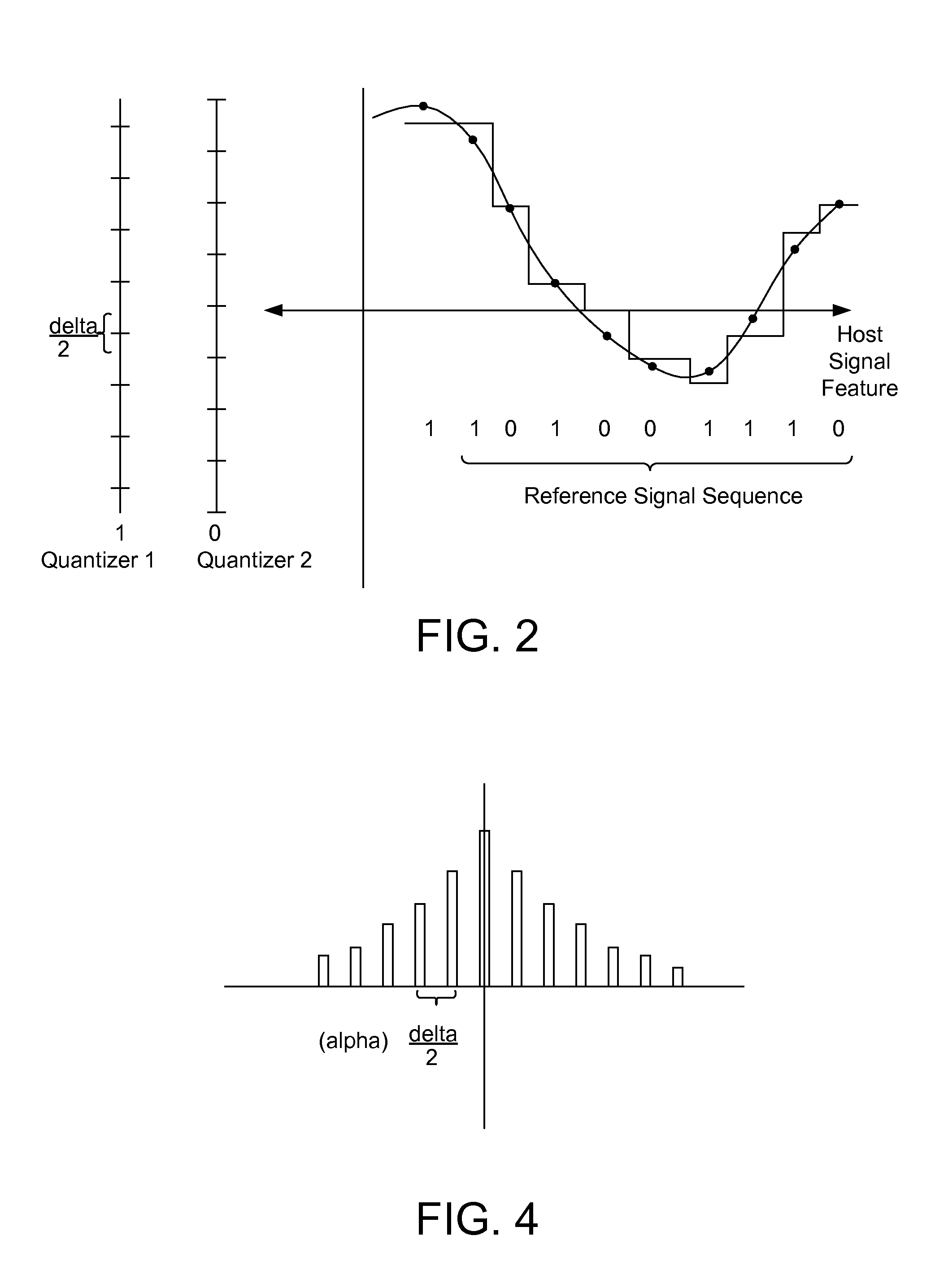Quantization-Based Data Embedding in Mapped Data
a data and mapping technology, applied in the field of multi-media signal processing, steganography and data hiding, can solve the problems of distorted samples, symbol errors, and the wrong quantizer or bin, and achieve the effect of reducing the impact of distortion, reducing symbol errors, and decoding more accurately
- Summary
- Abstract
- Description
- Claims
- Application Information
AI Technical Summary
Benefits of technology
Problems solved by technology
Method used
Image
Examples
example implementation
CDF Calculation
[0210]The CDF is calculated using all available reference locations in each block that is currently being embedded. The reference locations are controlled by a location key. One quarter of the total number of available locations within a block are reference locations; and these locations are chosen pseudo-randomly when the key is created. The CDF is generated from the histogram of the reference locations within the block according to equation 1. The histogram bins range from 0 to 255 in steps of one.
Quantizer Configuration
[0211]The first quantizer centroid is the nearest position in luminance to the last point where F(x) is equal to zero. The remaining centroids are assigned according to the finite state machine procedure described previously. We configure the quantizers using two different choices for the parameter that controlled the target separation in luminance. When increasing the target spacing we fix the embedding distortion and increase the distortion compens...
PUM
 Login to View More
Login to View More Abstract
Description
Claims
Application Information
 Login to View More
Login to View More - R&D
- Intellectual Property
- Life Sciences
- Materials
- Tech Scout
- Unparalleled Data Quality
- Higher Quality Content
- 60% Fewer Hallucinations
Browse by: Latest US Patents, China's latest patents, Technical Efficacy Thesaurus, Application Domain, Technology Topic, Popular Technical Reports.
© 2025 PatSnap. All rights reserved.Legal|Privacy policy|Modern Slavery Act Transparency Statement|Sitemap|About US| Contact US: help@patsnap.com



